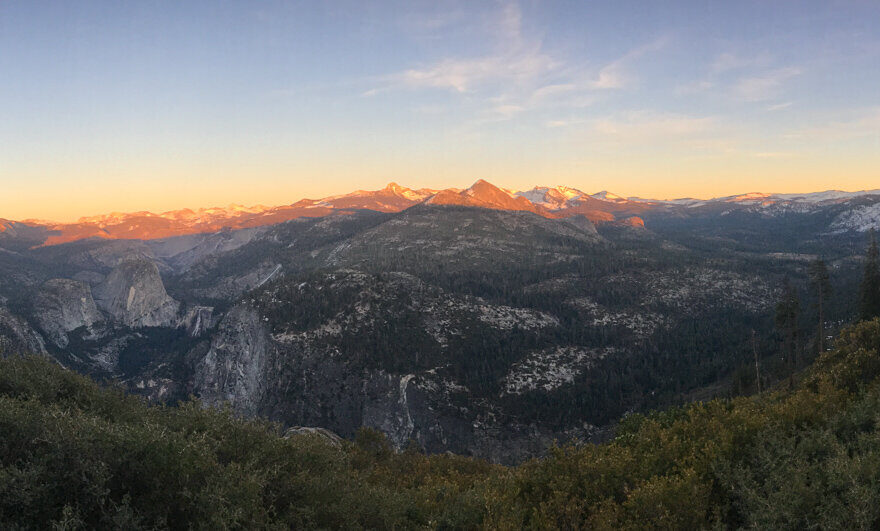Mar. 2021 Science Corner | “Hydrological benefits of restoring wildfire regimes in the Sierra Nevada persist in a warming climate”


In a paper recently published in the Journal of Hydrology, Rakhmatulina and her colleagues sought to answer an additional question about the connections between forests, wildfire, and hydrology: what happens to these connections in a changing climate?
Authors: Ekaterina Rakhmatulina, Gabrielle Boisramé, Scott L. Stephens, Sally Thompson
Interview, photo and story by: Peter Wyrsch
Up and out of Yosemite Valley, away from the National Park’s well-known views of Half Dome and Horsetail Falls, an ecological experiment is quietly humming away. The Illilouette Creek Basin serves as a natural laboratory, where since 1971 the connections between forest vegetation, wildfire, and hydrology have been assessed largely without the interference of intensive land management. This landscape and the science happening on it is helping scientists better understand how these systems relate to one another, and in turn how they will affect the millions of Californians who rely on forestland to provide clean water to cities across the state.
“The majority of those wildfire and water interactions do happen in mountains like the Sierra Nevada, and many people might not realize that it could affect them downstream as well… whatever disturbance happens uphill will affect those downstream,” says Dr. Katya Rakhmatulina, whose dissertation research at the University of California, Berkeley has focused on the Illilouette Creek Basin and formed the backdrop for a recent New Yorker piece on the future of fire in California.
In a paper recently published in the Journal of Hydrology, Rakhmatulina and her colleagues sought to answer an additional question about the connections between forests, wildfire, and hydrology: what happens to these connections in a changing climate?
Dr. Rakhmatulina again: “Fire doesn’t act on it’s own. WIldfire is connected to vegetation, climate change, and hydrology; this article talks about how all of those link together. In the Sierra Nevada, these different processes affect each other in a way that might produce certain outcomes.” Those outcomes can vary widely. In the Illilouette, wildfires have been allowed to burn for the past 50 years as part of an effort to reintroduce fire to the forest landscape. Using hydrological models, the authors sought to understand whether climate change might offset some of the positive impacts of restoring a natural fire regime in the Illilouette Creek Basin, and basins like it across the Sierra Nevada.
The results were startling: despite a warming climate, streamflow in the Basin and downstream still increased steadily when fire was reintroduced.
Further, Dr. Rakhmatulina’s research indicates that the re-introduction of fire to landscapes like the Illilouette across the Sierra Nevada would have a significant impact on the amount of water reaching communities downstream. The combined ecological and economic impact of a restored fire regime like the one observed in the Illilouette Creek Basin would make a meaningful difference to the State and Californians living downstream.
Read the paper here.